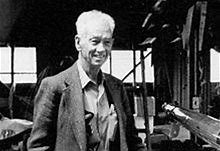By Larry Clinton, Sausalito Historical Society
COURTESY PHOTO
Myron Spaulding, the sailing violinist.
Myron Spaulding was a violinist who was also regarded as the finest sailor on San Francisco Bay in the 20th century. Even his peers and sometimes rival skippers Hank Easom and Warwick “Commodore” Tompkins agreed with this assessment, according to a 2020 profile of Spaulding in the sailing publication Latitude 38.
Spaulding was born in Eureka, in 1906. In an oral history he recorded for the Historical Society, he recalled how he got into sailing, when he joined a local yacht club at the age of six!
By 1915 he moved to San Francisco and enrolled in Polytechnic High School where he received a
credential in naval architecture and boatbuilding and designed and built his first small boat. Later
he earned an additional degree in music, playing the violin, which led to his day job.
After graduating, Spaulding played violin in the Fox Theatre's vaudeville orchestra, for silent movie houses, for the ballet, and eventually with the San Francisco Symphony where he performed until 1957. That work supported his real passion: racing and winning several class championships in the Bird class, Stars and 6-Meters. He also participated in six TransPacific races from San Francisco to Honolulu. The highlight of his racing career was winning the 1936 TransPac as skipper of the famous Sparkman & Stephens-designed yawl Dorade, earning him legendary status.
Spaulding opened a naval architecture office in San Francisco before World War II. His first significant design was the 20-foot Clipper. He also created the Spaulding 33, which can still be seen on San Francisco Bay, as well as notable custom boats.
During the war, he worked at the Madden and Lewis Company shipyard in Sausalito building tow boats and subchasers, then spent a couple of years as a marine surveyor before leasing property near McNear's Beach in the late 1940s, where he repaired boats, continued with survey work and designed boats. After losing his lease to make way for development, he returned to Sausalito in 1951 and bought the present waterfront site of Spaulding Boatworks.
Sailor and historian Carl Nolte recalled: “To Spaulding boats were life: He loved the design of them, loved to build them and loved to sail them. He made himself into an expert on how the forces of wind and currents and the sea affect boats and their performance, and made himself a master of design. His aim was to build sailing vessels that would conform to class rules (for nothing is so circumscribed by exact measurements as classes of racing yachts) but also would be fast and beautiful.”
In the words of Commodore Tompkins, “Myron was a tremendous influence on every sailor active on San Francisco Bay in the first 60 or 70 years of the century, whether they knew it or not. Besides being an excellent sailor, he was one of the premiere designers in the country, though it went largely unrecognized. The thing that Myron did for all people under his influence was to show them a way and an ethic of addressing problems that was results-oriented and had very little to do with economics. Concepts and results were his standards of excellence. Never the dollar.”
Known as the dean of Bay Area boat builders, Spaulding worked almost until the day of his death. When his widow, Gladys passed away a little more than a year and a half later, she left the Spaulding Boatworks in a charitable trust, with instructions for the trustees to form a non-profit corporation, named the Spaulding Wooden Boat Center (SWBC). Today, the SWBC is a working and living museum, with the mission to restore historic wooden sailing vessels; preserve and enhance its working boatyard; create a place where people can gather to use, enjoy, and learn about wooden boats, while educating others about wooden boat building skills, traditions and values. Today, it’s part of the Spaulding Marine Center, at the foot of Gate 5 Road.

